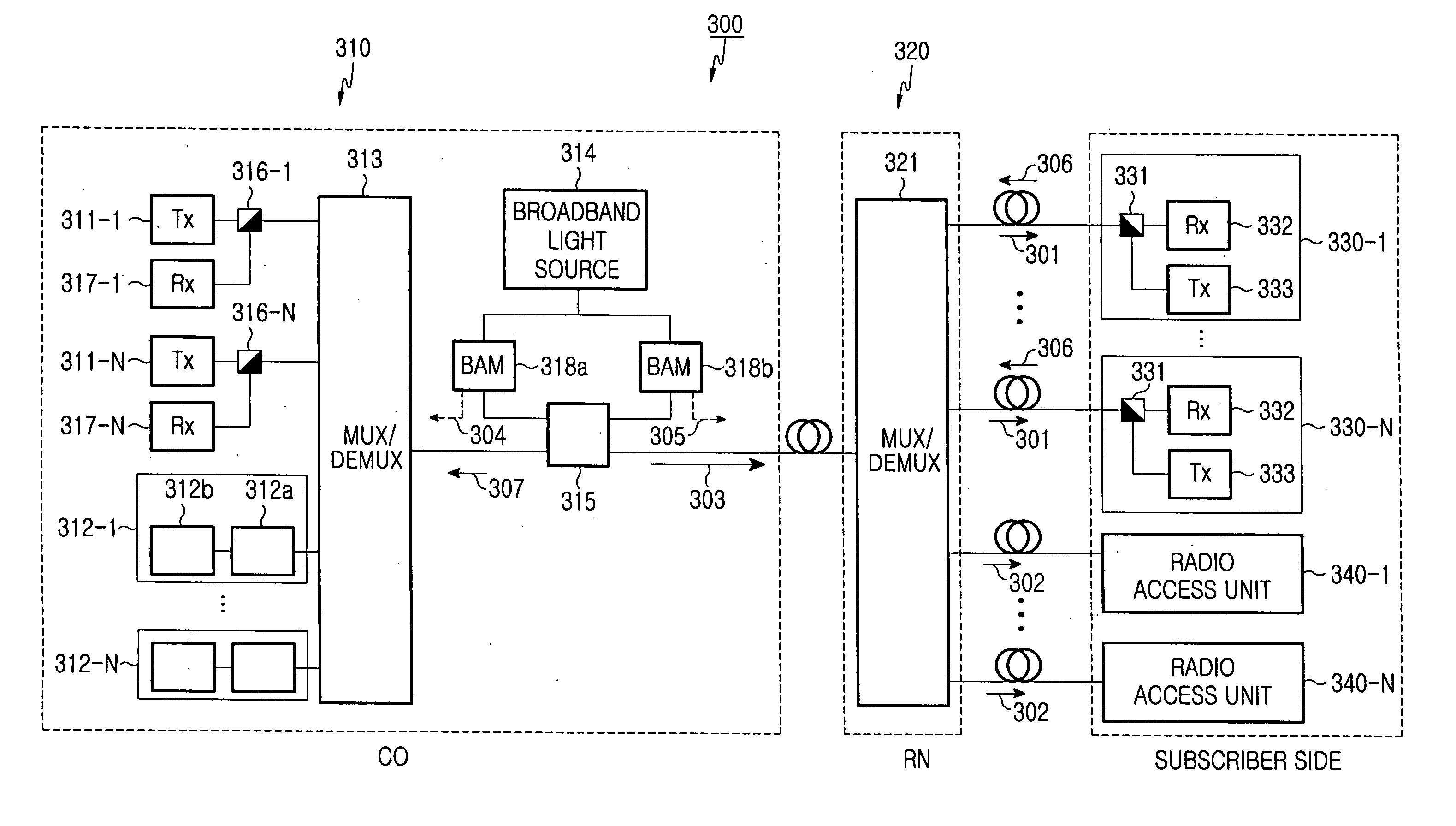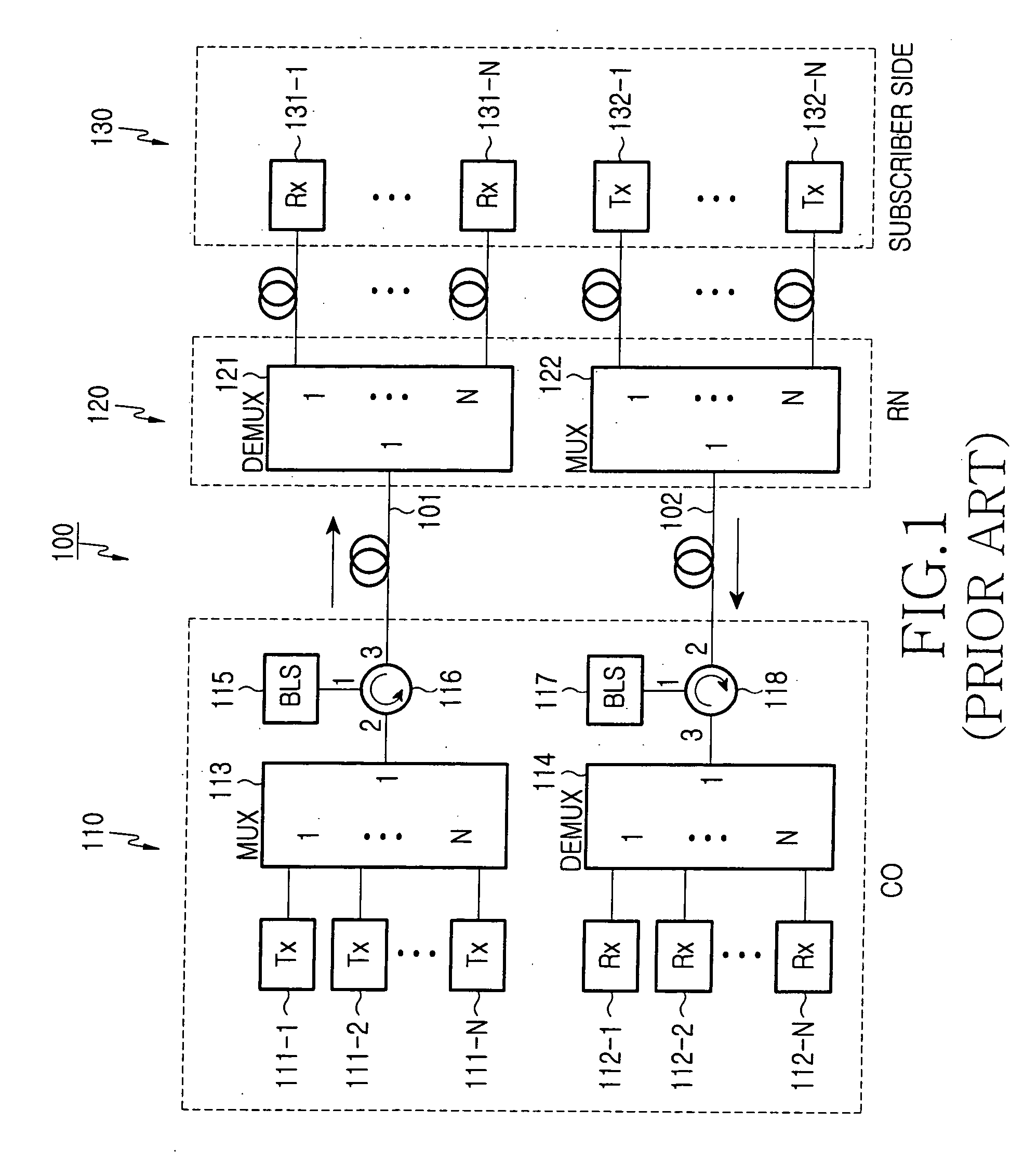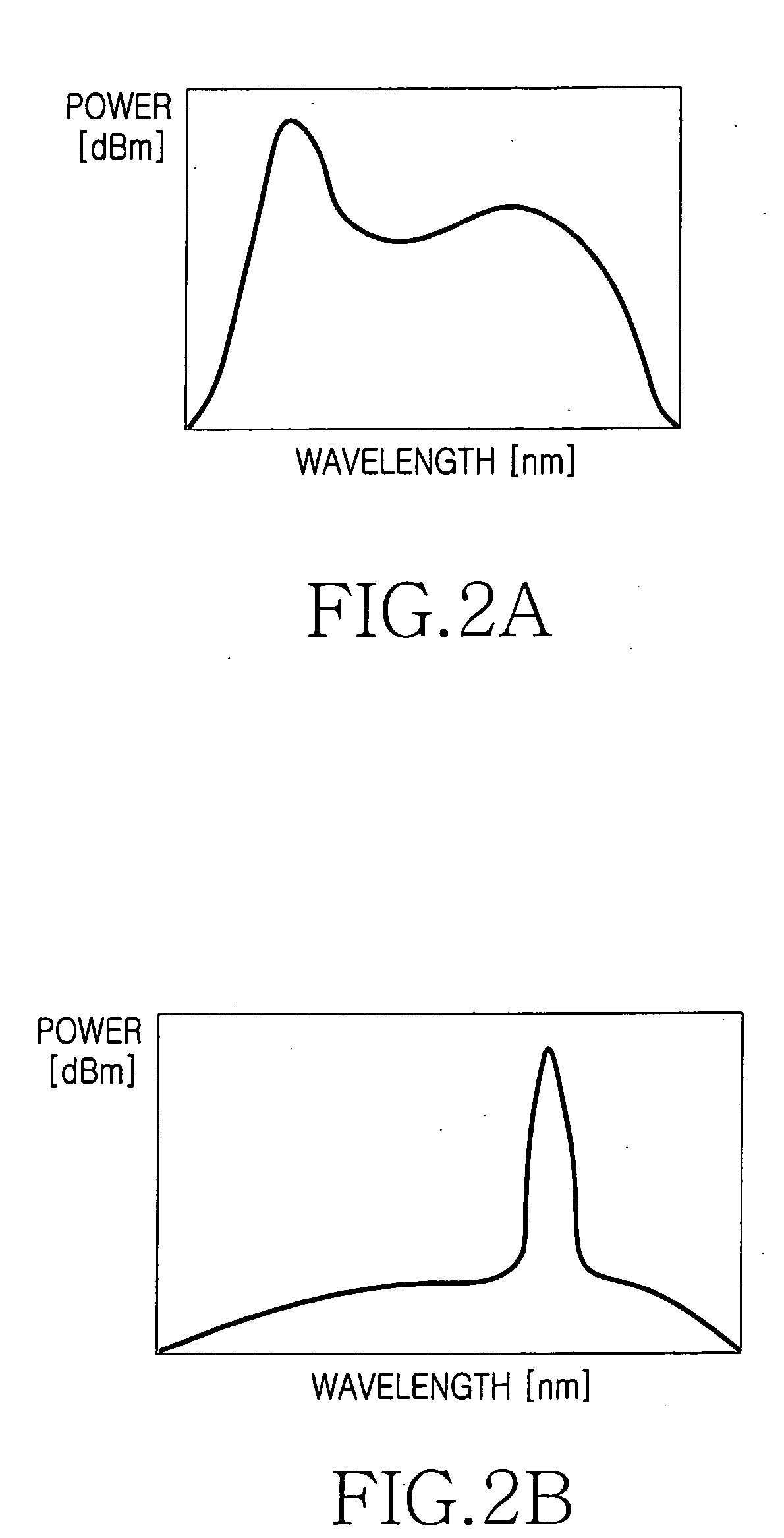Optical access network of wavelength division method and passive optical network using the same
a wavelength division and optical access network technology, applied in the field of optical access networks, can solve the problems of large initial investment costs for the above-described optical access network, serious loss can occur when limiting bandwidth, network requires a large amount of initial costs and costs associated with the maintenance of the network including optical fibers, and achieve the effect of lowering investment costs
- Summary
- Abstract
- Description
- Claims
- Application Information
AI Technical Summary
Benefits of technology
Problems solved by technology
Method used
Image
Examples
first embodiment
[0038]FIG. 3 illustrates the structure of an optical access network according to the present invention. FIGS. 4A to 4D are graphical illustration of the optical access network shown in FIG. 3.
[0039] Referring to FIG. 3, a wavelength division multiplexed (WDM) optical access network 200 according to the first embodiment of the present invention includes a central office (CO) 210 for multiplexing first optical signals 203 used for providing a wire data service at a high speed and second optical signals 204 applied in order to transmit a wireless data service to subscriber terminals, a remote node (RN) 220 for de-multiplexing a multiplexed optical signal 202 received from the CO 210, and a subscriber side 230 for receiving the first optical signals 203 and the second optical signals 204 de-multiplexed in the RN 220. The subscriber side 230 includes a plurality of subscribers 231-1 to 213-N, each of which is connected to the RN 220, and a plurality of radio access units, each of which i...
third embodiment
[0066]FIG. 10 is a block diagram illustrating the structure of a bi-directional passive optical network according to the present invention, and FIG. 11 is a graph illustrating a signal flow in each component shown in FIG. 10.
[0067] Referring to FIG. 10, a passive optical access network 400 according to the third embodiment of the present invention includes a central office (CO) 410 for multiplexing first downstream optical signals data1 and data2 used for wire data transmission at a high speed and second downstream optical signals used for providing a wireless data service, a remote node (RN) 420 linked to the CO 410, a plurality of subscribers 430 linked to the RN 420, and a plurality of radio access units linked with the RN 420.
[0068] The CO 410 multiplexes the first downstream optical signals and the second downstream optical signals into downstream optical signals to be output to the RN 420 and de-multiplexes upstream optical signals multiplexed in the RN 420 to first upstream ...
PUM
 Login to View More
Login to View More Abstract
Description
Claims
Application Information
 Login to View More
Login to View More - R&D
- Intellectual Property
- Life Sciences
- Materials
- Tech Scout
- Unparalleled Data Quality
- Higher Quality Content
- 60% Fewer Hallucinations
Browse by: Latest US Patents, China's latest patents, Technical Efficacy Thesaurus, Application Domain, Technology Topic, Popular Technical Reports.
© 2025 PatSnap. All rights reserved.Legal|Privacy policy|Modern Slavery Act Transparency Statement|Sitemap|About US| Contact US: help@patsnap.com



